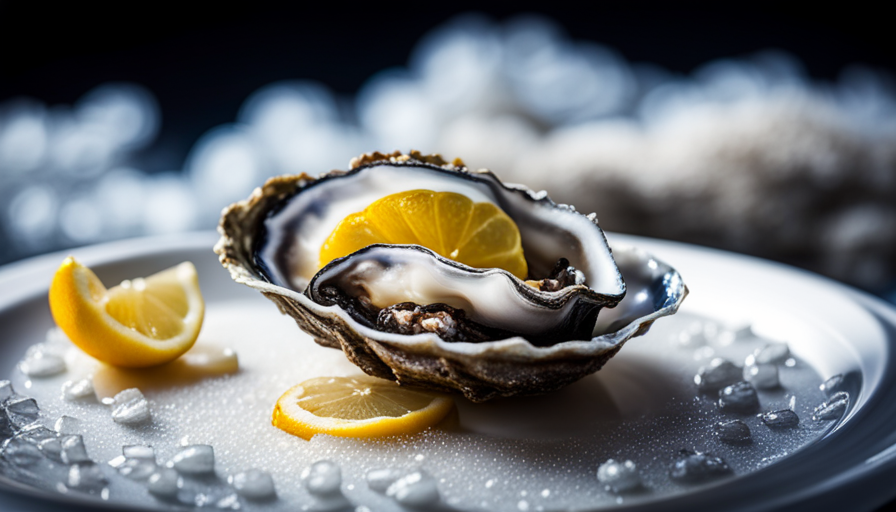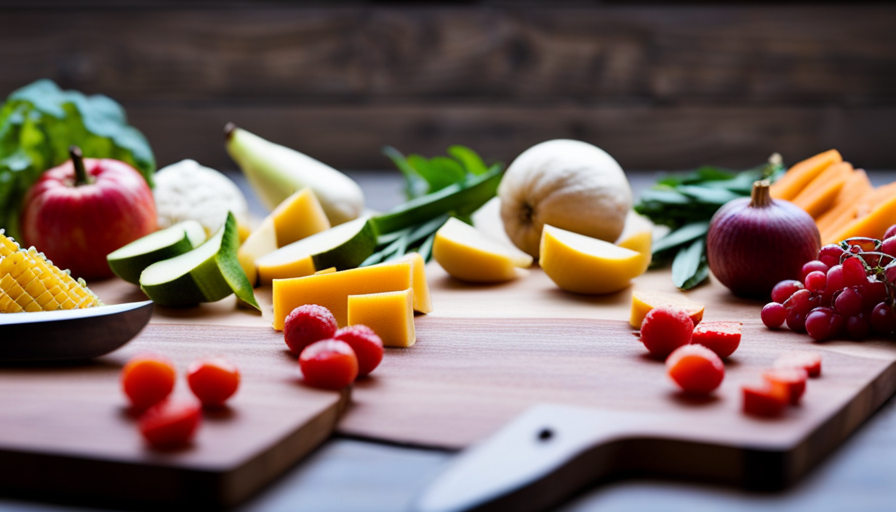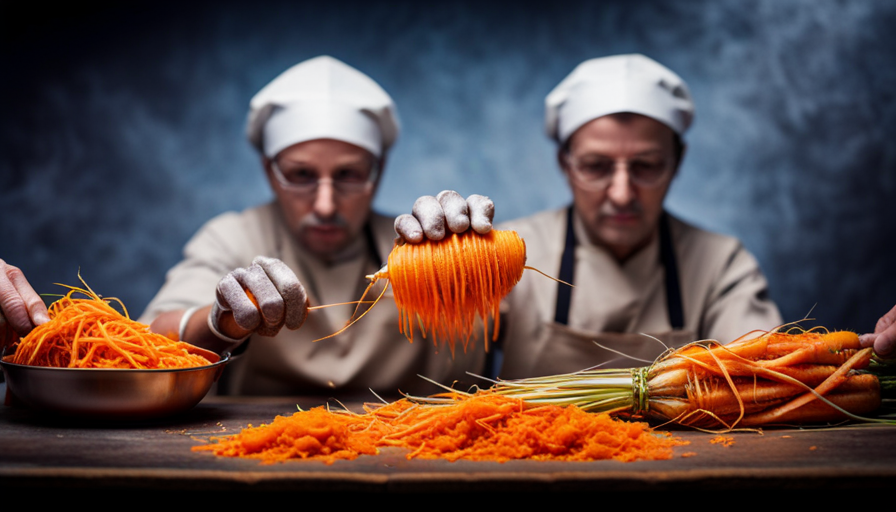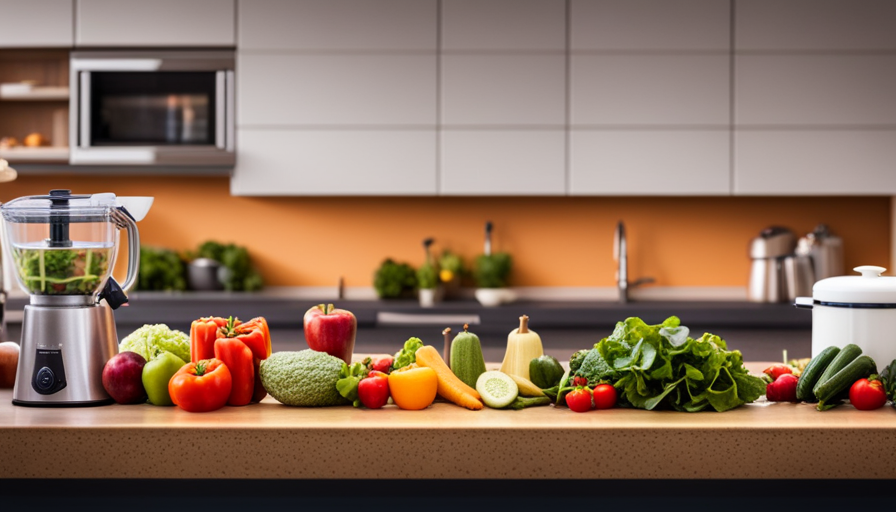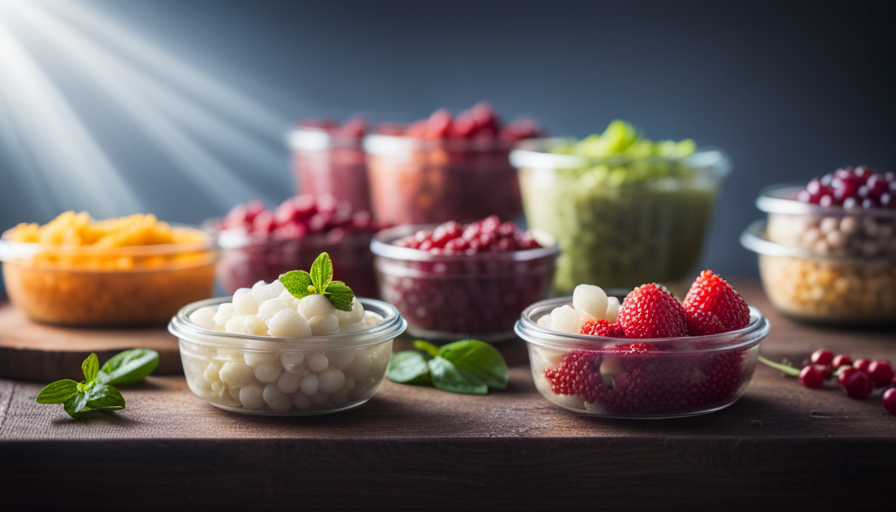Welcome to the world of raw oysters, where succulent flavors and tender textures captivate your taste buds. But beware, as this seafood delicacy carries a hidden danger – the risk of foodborne illness.
Fear not, for we shall navigate these treacherous waters together, providing you with a comprehensive guide on how to prepare raw oysters without succumbing to the perils of foodborne illnesses.
Selecting the finest oysters is paramount. Seek out those that are fresh and of high quality, ensuring a delectable experience. Cleanliness is key, as proper handling and sanitation are crucial to avoid contamination. Equipped with safe and hygienic tools, you will master the art of shucking, unlocking the hidden gems within these bivalves.
Storing oysters correctly will preserve their freshness, while understanding the risks of consuming them raw is essential.
With knowledge and precaution, you can minimize the risk of foodborne illnesses. Experiment with various serving styles and accompaniments, discovering the perfect combination to enhance your oyster experience. For those seeking a safer alternative, explore cooked oyster recipes that will guarantee both taste and safety.
So, embark on this gastronomic journey, armed with wisdom and a passion for raw oysters, knowing that with proper preparation, food poisoning shall never darken your path.
Key Takeaways
- Select fresh and high-quality oysters from reputable seafood markets or trusted suppliers.
- Properly store oysters in the refrigerator at 40°F or below.
- Shuck oysters properly using safe and hygienic tools, and discard oysters with broken shells or foul odor.
- Consume raw oysters within 2-3 days, and do not consume if left unrefrigerated for more than two hours.
Selecting Fresh and High-Quality Oysters
When selecting fresh and high-quality oysters, it’s crucial to ensure that their shells are closed tightly, indicating their freshness and minimizing the risk of food poisoning. Oyster selection plays a significant role in preventing any potential health risks associated with consuming raw oysters.
When you come across oysters with open shells, it’s best to avoid them as they may be dead or contaminated. Look for oysters that have a clean and pleasant oceanic smell, as any strong or unpleasant odor could be a sign of spoilage. Additionally, fresh oysters should feel heavy in your hand and have a vibrant, shiny appearance.
To ensure the utmost freshness, it’s recommended to purchase oysters from reputable seafood markets or trusted suppliers. These establishments often have strict quality control measures in place, ensuring that the oysters they offer are of the highest standard.
It’s also important to note that oysters are highly perishable, so it’s advisable to consume them as soon as possible after purchase. Storing them properly in a refrigerator, at a temperature of 40°F or below, can help maintain their freshness for a few days.
By being vigilant in your oyster selection and following these guidelines, you can reduce the risk of food poisoning and enjoy the delectable flavors that fresh oysters have to offer.
Cleaning and Handling Oysters Properly
To ensure you don’t end up with a less-than-ideal seafood experience, it’s crucial that you treat these delicate ocean gems with the utmost care, like handling a fragile treasure waiting to reveal its hidden glory.
Cleaning and handling oysters properly is essential to prevent food poisoning. Here are some cleaning techniques and oyster shucking tips to ensure you enjoy safe and delicious oysters:
-
Scrubbing: Start by scrubbing the oysters under cold running water to remove any dirt, sand, or debris clinging to the shells. Use a stiff brush to gently scrub the shells, paying close attention to the hinge area.
-
Shucking: Properly shucking an oyster is crucial to avoid contamination. Use a sturdy oyster knife and insert it into the hinge, applying gentle pressure. Twist the knife to pop the hinge open, then slide the knife along the top shell to separate it from the bottom. Be careful not to cut yourself.
-
Discarding: Inspect each oyster before consuming. Discard any oysters with broken shells, foul odor, or those that do not close when tapped. Additionally, discard any oysters that have an unusually slimy texture or look discolored.
By following these cleaning techniques and oyster shucking tips, you can ensure a safe and enjoyable oyster experience. Remember to always handle oysters with care and trust your senses to identify any signs of spoilage.
Choosing Safe and Hygienic Tools for Shucking
Make sure you’ve got the right tools in your shucking arsenal to ensure a safe and hygienic oyster shucking experience. Safe shucking techniques and proper oyster storage are crucial in preventing food poisoning and maintaining the integrity of the oysters.
Firstly, invest in a good quality oyster knife. Look for one that has a strong and sturdy blade made from stainless steel to prevent rust and contamination. The blade should also be sharp and pointed to easily penetrate the oyster shell. A sturdy glove or towel is also important to protect your hand while shucking.
Before shucking, it’s essential to properly clean and store the oysters. Rinse them thoroughly under cold running water to remove any dirt or debris. Discard any oysters with broken shells or that don’t close when tapped. Store the live oysters in a cool environment, preferably in a bowl or container with a damp cloth to maintain their freshness.
When shucking, hold the oyster firmly with the rounded side down, using the towel or glove to protect your hand. Insert the knife into the hinge, then twist and wiggle it to pop the shell open. Be careful not to apply too much force to avoid injury or shell fragments entering the oyster.
By following these safe shucking techniques and proper oyster storage practices, you can enjoy delicious raw oysters without the risk of food poisoning. Remember, always prioritize safety and hygiene when preparing and handling oysters.
Mastering the Art of Shucking Oysters
Get ready to dive into the world of oyster shucking and unlock the hidden treasure within those shells. When it comes to mastering the art of shucking oysters, there are a few techniques you need to know. First, make sure you have a good oyster knife with a sturdy blade and a comfortable handle. This will make the shucking process much easier and safer.
To start, hold the oyster firmly in a towel or glove, with the flat side facing up and the hinge towards you. Insert the tip of the knife into the hinge, applying gentle pressure until you feel it pop open. Then, slide the knife along the top shell to cut the muscle and separate the two shells. Be careful not to spill any of the delicious oyster liquor.
Now that you have successfully shucked your oyster, it’s time to enjoy its unique flavors. Oysters can have a range of tasting notes, depending on their origin and species. Some may have a briny and salty taste, while others can be sweet and buttery. Take a moment to appreciate the texture and freshness of the oyster, and savor its delicate flavors.
Incorporating different shucking techniques and exploring various oyster tasting notes can add excitement to your culinary journey. So, grab your oyster knife and get ready to indulge in the wonderful world of shucking and tasting oysters.
Storing Oysters to Maintain Freshness
Ensuring the ultimate freshness of your oysters is crucial for preserving their delicate flavors and textures. Properly storing oysters is key to maintaining their quality and reducing the risk of food poisoning.
To start, it’s important to keep the oysters alive until you’re ready to prepare them. Store them in a cool environment, ideally between 35-45 degrees Fahrenheit. This can be achieved by placing them in a bowl or container with a damp cloth over ice. It’s important to note that oysters shouldn’t be stored in freshwater as it can kill them.
When it comes to oyster storage, timing is everything. If you’re not planning on consuming the oysters immediately, it’s best to keep them on ice and consume them within a day or two. For longer storage, you can refrigerate the oysters for up to a week in the coldest part of your refrigerator, ensuring they’re still alive and the shells are tightly closed. However, it’s always recommended to consume oysters as soon as possible for the best flavor and freshness.
When using oysters in recipes, it’s important to properly handle and store any leftovers. Cooked oysters should be refrigerated in a shallow, airtight container and consumed within 2-3 days. Raw oysters shouldn’t be consumed if they’ve been left unrefrigerated for more than two hours.
By following these storage methods, you can ensure that your oysters remain fresh and safe to consume, allowing you to enjoy their unique flavors in a variety of delicious recipes.
Recognizing Signs of Spoiled Oysters
Recognizing the signs of spoiled oysters can help you savor the taste of fresh seafood without any unpleasant surprises. When it comes to identifying spoiled oysters, your senses play a crucial role. Here are three key signs to look out for:
-
Identifying off-putting odors: Fresh oysters have a pleasant, salty smell reminiscent of the ocean. If you notice a strong, foul odor resembling ammonia or a rotten egg, it’s a clear indication that the oysters have gone bad.
-
Noticing unusual texture or appearance: Fresh oysters should have a firm, plump texture with a shiny, moist shell. If you come across oysters that feel slimy, mushy, or excessively dry, it’s best to discard them. Additionally, look out for shells that are cracked, chipped, or discolored, as these can be signs of spoilage.
Remember, consuming spoiled oysters can lead to food poisoning, which can cause nausea, vomiting, diarrhea, and other unpleasant symptoms. It’s crucial to prioritize your health and safety by being vigilant when it comes to recognizing the signs of spoiled oysters. If you have any doubts about the freshness of oysters, it’s always better to err on the side of caution and choose a different batch.
Understanding the Risks of Eating Raw Oysters
Now that you know how to recognize signs of spoiled oysters, it’s important to understand the risks of eating raw oysters in order to protect yourself from food poisoning.
Raw oysters can pose a potential health risk due to the presence of harmful bacteria and viruses, such as Vibrio vulnificus and Norovirus. These pathogens can cause severe illnesses, including gastrointestinal symptoms like nausea, vomiting, and diarrhea.
To minimize the risk of foodborne illnesses, it’s essential to understand oyster seasonality and identify reputable oyster suppliers. Oysters are filter feeders, meaning they accumulate bacteria and other microorganisms present in their environment. Therefore, the risk of contamination is higher during warmer months when water temperatures are ideal for bacterial growth. It is advisable to consume raw oysters in colder months, when the water is colder, reducing the risk of bacterial contamination.
When purchasing oysters, it is crucial to choose reputable suppliers who follow strict safety protocols. Look for suppliers who prioritize quality control measures, such as regular testing for pathogens and proper handling and storage practices. Reputable suppliers often display certifications and have a track record of providing safe seafood products.
By understanding oyster seasonality and identifying reputable suppliers, you can enjoy raw oysters with peace of mind, knowing that you have taken the necessary precautions to protect yourself from food poisoning.
Minimizing the Risk of Foodborne Illnesses
To minimize your risk of getting sick, it’s important to understand the seasonality of oysters and choose reputable suppliers, as studies have shown that 85% of foodborne illnesses related to oysters are caused by improper handling and storage practices.
Here are four key steps you can take to minimize the risk of foodborne illnesses when preparing raw oysters:
-
Preventing cross-contamination: It’s crucial to keep raw oysters separate from other foods to avoid the spread of bacteria. Use separate cutting boards, knives, and utensils for raw oysters and wash them thoroughly with hot, soapy water after each use.
-
Proper storage: Raw oysters should be kept refrigerated at temperatures below 40°F (4°C) until they are ready to be consumed. Discard any oysters that have a foul smell or appear to be spoiled.
-
Choosing reputable suppliers: Purchase oysters from reputable suppliers who follow strict handling and storage protocols. Look for certifications indicating that the oysters have been properly harvested and handled.
-
Proper cooking techniques: If you’re concerned about the risk of foodborne illnesses, consider cooking your oysters thoroughly. Cooking them to an internal temperature of 145°F (63°C) for at least 15 seconds can help kill harmful bacteria.
By following these steps, you can greatly reduce the risk of foodborne illnesses associated with raw oysters. Remember to prioritize safety and enjoy this delicious seafood delicacy with peace of mind.
Trying Different Serving Styles and Accompaniments
One way to enhance your oyster dining experience is by experimenting with different serving styles and accompaniments.
There are various oyster varieties to choose from, and each one offers a unique flavor profile. For example, the Pacific oysters are known for their briny taste, while the Kumamoto oysters have a sweeter and creamier flavor. By trying different oyster varieties, you can discover your personal favorite.
To elevate your oyster dish, consider adding popular accompaniments. Classic choices include a squeeze of lemon juice, which adds a refreshing tang, or a dash of hot sauce for a spicy kick. Another popular option is mignonette sauce, made with shallots, vinegar, and pepper, which adds a tangy and slightly sweet flavor. For those who prefer a creamier taste, horseradish sauce or cocktail sauce can be excellent choices.
When it comes to serving styles, you have several options. You can enjoy oysters on the half shell, which is the most traditional way. Alternatively, you can try grilling or baking them, which can enhance their flavors and add a smoky touch. Another creative idea is to incorporate oysters into a seafood stew or pasta dish, allowing their briny taste to shine alongside other ingredients.
By exploring different serving styles and accompaniments, you can truly elevate your oyster dining experience. So go ahead and get creative with your oyster preparations, and enjoy the delicious flavors that these versatile mollusks have to offer.
Exploring Cooked Oyster Recipes for a Safe Alternative
If you’re feeling adventurous, why not dive into the world of cooked oyster recipes and discover a safe alternative to raw oysters that’ll tickle your taste buds and warm your soul? Cooking oysters not only eliminates the risk of food poisoning but also brings out unique flavors and textures that you may find even more enjoyable than eating them raw.
Here are four popular cooked oyster dishes that you must try:
-
Oysters Rockefeller: This classic dish features oysters topped with a rich mixture of spinach, herbs, breadcrumbs, and butter, then baked until golden and bubbly. Not only is it delicious, but it’s also packed with nutrients from the spinach.
-
Grilled Oysters: Grilling oysters adds a smoky flavor and a slightly charred texture. Simply place the oysters on a hot grill until they open, then top them with a garlic butter sauce or your favorite marinade.
-
Oyster Stew: This comforting dish combines plump oysters with a creamy broth, often enriched with milk, butter, and seasonings. It’s a hearty and satisfying option for those looking for a warm and comforting meal.
-
Oyster Po’ Boy: Originating from New Orleans, this sandwich features crispy fried oysters served on a French baguette with lettuce, tomatoes, and a tangy remoulade sauce. It’s a popular choice for seafood lovers craving a satisfying meal.
When cooked properly, oysters can be a healthy addition to your diet. They’re a good source of protein, low in fat, and contain essential vitamins and minerals like zinc and vitamin B12. So, why not give these cooked oyster recipes a try and enjoy their delicious flavors while reaping the health benefits they offer?
Frequently Asked Questions
How do I know if an oyster is fresh and high-quality?
To determine if an oyster is fresh and high-quality, look for specific indicators of freshness. Start by checking the shell for cleanliness and a tightly closed position. Fresh oysters should feel heavy in your hand and have a briny smell, like the sea. Additionally, their flesh should be plump and translucent, with no off-putting odors or sliminess. These characteristics are reliable signs of a fresh and high-quality oyster.
What are the best tools to use when shucking oysters?
To successfully shuck oysters, you’ll need the best oyster shucking techniques and essential oyster shucking tools.
Picture yourself as a skilled surgeon, delicately wielding a sharp oyster knife. The tools you’ll need include a sturdy glove for protection and a shucking knife with a strong, pointed blade.
With a firm grip, insert the knife into the hinge of the oyster, using a twisting motion to pop it open.
Remember, practice makes perfect, so keep honing your skills!
How long can I store oysters before they spoil?
To properly store oysters and ensure they remain safe to eat, follow these guidelines:
- Store them in a refrigerator at a temperature of 32-45°F (0-7°C).
- Keep them in a shallow container, covered with a damp cloth or paper towel to maintain humidity.
- Avoid sealing them in an airtight container.
- Check the oysters before consuming by ensuring they’re tightly closed.
- Discard any that are open, damaged, or have a strong odor as they may be spoiled and can cause food poisoning.
What are the signs that an oyster is spoiled?
To ensure you don’t end up with a bad oyster experience, watch out for these telltale signs of spoilage: a pungent, fishy odor, slimy texture, or shells that are cracked or open.
When it comes to preventing food poisoning from oysters, proper handling and storage are key. Keep oysters refrigerated at 40°F or below, discard any with broken shells, and cook them thoroughly before consuming.
These precautions will help you enjoy oysters without any unpleasant surprises.
Are there any cooked oyster recipes that I can try as a safe alternative to raw oysters?
Sure! If you’re looking for a safe alternative to raw oysters, there are plenty of delicious cooked oyster recipes you can try. Cooking oysters not only eliminates the risk of food poisoning, but it also enhances their flavor.
One popular option is Oysters Rockefeller, where oysters are topped with a mixture of spinach, herbs, and breadcrumbs, then baked until golden and crispy. Besides being tasty, oysters are also packed with health benefits, like being a good source of protein, vitamins, and minerals.
Is Improper Food Storage a Cause of Food Poisoning from Raw Oysters?
Improper storing raw and cooked food can indeed be a cause of food poisoning from raw oysters. When raw oysters are not stored at the correct temperature or if they come into contact with other raw or undercooked foods, they can become contaminated with harmful bacteria like Vibrio. Proper storage is crucial to prevent food poisoning.
Conclusion
In conclusion, by following the steps outlined in this article, you can ensure a safe and enjoyable experience with raw oysters. From selecting the freshest oysters to properly cleaning and shucking them, you have the power to minimize the risk of food poisoning.
Remember, like pearls hidden within their shells, raw oysters hold a delicate yet powerful flavor that can transport your taste buds to the depths of the ocean. So, embark on this culinary adventure with confidence, knowing that you have the knowledge to savor these delectable treasures without compromising your health.

